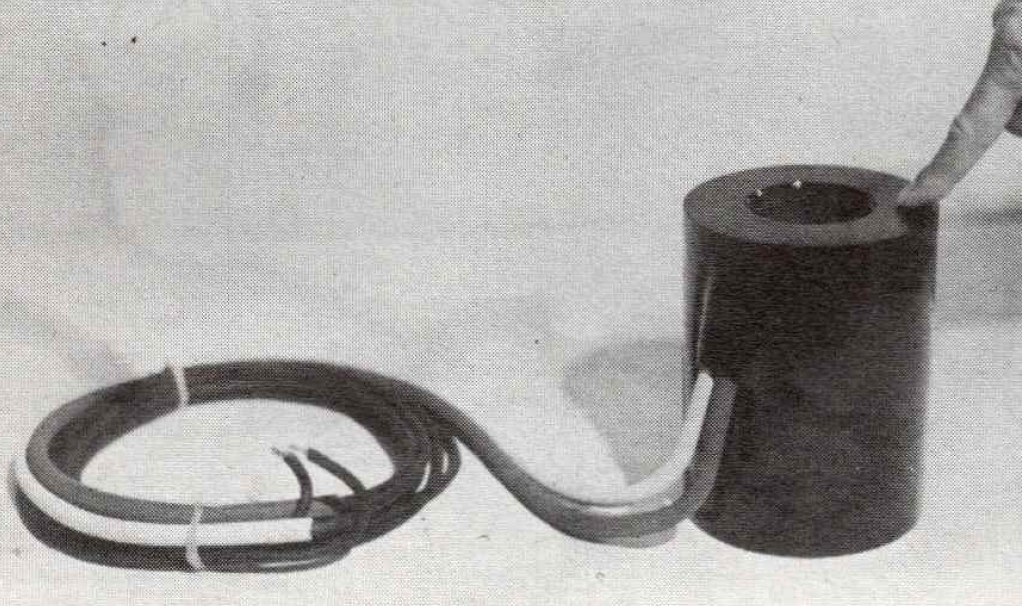Technology Spotlight: Episode 9
Want to realize modern value from an epoxy thermal curative that’s older than your parents? Let’s go.
Railway signal pick-up coil encapsulated in epoxy resin as protection against vibration, thermal and environmental exposure. Coil is mounted under engine near the roadbed (Image: Handbook of Epoxy Resins)
Are you a recent chemistry or chemical engineering graduate? Congratulations on your achievement and welcome to the industry. Built a good knowledge base in epoxy chemistry and curing agents, especially formulations intended for specific process conditions, service environments, and cost positions? Terrific, but certain subjects unfortunately received a passing reference in the classroom, and epoxy-anhydride systems were but one of these.
Lee and Neville’s Handbook of Epoxy Resins served as my first epoxy bible, and I experienced a revelation on how to formulate high glass-transition-temperature systems with the simplicity afforded by DGEBA epoxy resins and dianhydrides. Later in life, a convergence occurred, when I had the good fortune to lead a dianhydrides business with a devoted team of industry professionals. Customers enjoyed the successes of epoxy-dianhydride formulations, but the chemistry remained hidden in plain sight to others.
So, if your lab work involves formulating the following high-temperature materials:
Epoxy coating powders used in electronic insulation
Epoxy electrical castings used in component isolation and protection
Epoxy adhesives for automotive, electrical, and industrial assembly
Fusion-bonded-epoxy coatings used in industrial surface protection
then your thermal curative choices are likely to include:
• Dicyandiamide (DICY)
• Monoanhydrides e.g. HHPA, NMA, MTHPA
which begs the question…Why? Creature of habit? Just following historical recipes? Why aren’t dianhydrides on your list? After all, as a class of thermal curative, dianhydrides e.g. Pyromellitic dianhydride (PMDA) have been in use commercially since the 1960s for epoxies, expanding to polyimide synthesis in the same decade.
Let’s review some PMDA FAQs:
Is PMDA soluble in DGEBA resins?
PMDA is a solid, insoluble at room temperature, soluble at elevated temperatures. Micronized PMDA can be more easily incorporated into epoxy resins at room or elevated temperatures. Additionally, stable dispersions of micronized PMDA in monoanhydride carriers are suitable for liquid 2k formulations e.g. potting compounds. In comparison, DICY is a solid and monoanhydrides are liquids.
Can PMDA be used for latent cure systems?
Yes. Without accelerators, epoxy-PMDA systems may require up to 24 hours to achieve full cure. In the range of 180-220°C, this would be reduced to a few hours; faster with accelerators. Keep in mind that exotherms tend to be lower, reducing shrinkage and improving dimensional stability of castings, etc.
What are the performance advantages of DGEBA epoxies cured with PMDA?
Epoxies cured with dianhydrides e.g. PMDA exhibit generally improved high-temperature and electrical properties; and greater chemical resistance; albeit with greater rigidity, as long as that can be tolerated. Glass transition temperatures in excess of 200°C are easily achievable.
What about costs?
Ranked on an increasing cost/kg basis, DICY => Monoanhydrides => PMDA => Other Dianhydrides. The improved properties of epoxy-PMDA systems are deserving of a cost/performance analysis; your mileage may vary.
It’s quite ironic that a thermal curative from the 1960s that was part of the original wave of epoxy formulations has been inadvertently shelved for the handling convenience of liquid monoanhydrides. Dianhydrides including PMDA will always be the undisputed choice of thermal curative for sustainable performance properties of epoxies exposed to adverse conditions. Recapture some of this history with a fresh look at epoxy-PMDA systems for your next formulation project.
Need advice on sourcing of PMDA? Reach out for a free initial consultation today.

